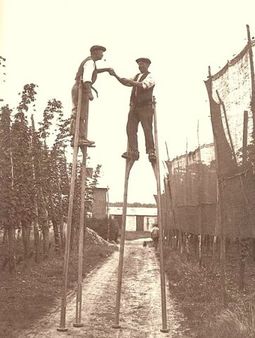 Creating the optimal hop yard that produces maximum yields with minimal infrastructure, labor, and inputs is critical to long term success & profitability of a hop yard. Hopefully the following discussion can help improve understanding of how to achieve the optimally yielding hop yard for those just starting. Choosing the right Trellis design begins with and ends with an understanding of the hop plant itself. It is very important to understand how hops grow, what makes them produce optimal yields, and what the differences are between varieties and genotypes. Some thoughts to immediately discard:
Grower notes: Seeing heat-stress symptoms in some hop yards. The older lower leaves yellow and fall off without any obvious signs of pests or disease. This is more common in years with a wet spring followed by a hot & dry June/July. The side arms are short but usually loaded with burrs in reaction to the stress. The hop plant is attempting to "re-balance" its transpiration losses through the foliage versus what the root system can supply. (The wet spring reduced the root mass.) To help the plants adjust and keep cone development on track, apply a top dressing of a guano or organic manure (we use Naturesafe Stressguard for this) and keep adequate water supplied. (and pray for rain:) )  Hops - Bottom Leaves Turning Yellow www.homebrewtalk.com A home brewing beer and wine making civilized discussion community. Also with beer/wine/mead/cider discussion, beer reviews, pub talk, and general chit-chat.  © Dutch Touch Growers, Inc. © Dutch Touch Growers, Inc. A male hop plant. Very rare in the wild. Stressed females can show signs of male anatomy but will be sterile and will not self pollinate. If you locate a male plant that shows no signs of female anatomy, you should eliminate it immediately as it will pollinate all the female plants in the area. Most feral male plants are unknown type because they do not produce cones that can be tested. Hop breeders will use USDA registered males with a known pedigree (like increased resistance to mildews) to breed new varieties. Some triploid hops like Zeus and Columbus have an odd 3 sets of chromosomes (usually 2 male/1 female) which can revert temporarily to male flower production if severely stressed. The male pictured here is USDA19058M (boys are assigned numbers, while the girls get names). It is a registered high-alpha type male. 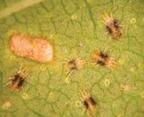 The Two Spotted Spider Mite in the Northeast Hopyard www.uvm.edu The two spotted spider mite (TSSM) Tetranychus urticae Koch is a common pest of many crops and ornamentals. Hop growers, landscapers, arborists, and vegetable and fruit growers are familiar with these small 8 -legged creatures that are more closely related to spiders than insects. They can be a major cause of ... Grower Notes: Low levels of spidermites are being reported by several growers. So far the cool wet weather has kept them in check - watch out if the weather goes hot & dry!
Also, powdery mildew has been seen on weeds around the hop yards; so conditions are right for it to form - scout the lower leaves for visual symptoms. Many varieties of hops are entering the burr stage and burrs infect easily during wet humid weather. An effective protectant fungicide for burr stage is Quintec. Apply it as a preventative if the wet weather continues during cone formation and you have seen foliar symptoms. The crop in Northern Michigan appears to be running about two weeks behind the Southern Michigan hop yards - so adjust accordingly. I am busy doing field checks with hop growers during the month of May. I am finding winter crown desiccation in new hop yards that did not have reliable snow cover. The crowns appear to have been exposed to sun & wind while the ground was frozen. The fleshy roots remain white - no rot is present. The frozen soil/roots could not supply water to the exposed crown as it is dried out by the sun & wind. There have been no reports of this type of winter damage from up North, where they had good snow cover. Varieties like Zeus, Glacier, Saazer, Nugget & Cascade were affected more than varieties like Chinook. Protecting these crown buds from exposure is important ! Some of these damaged crowns may regenerate slowly; given time. Our winter exposures and duration are longer and harsher in the Midwest than those out in Oregon and Washington. 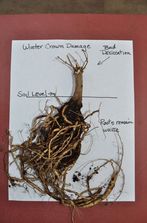 Click to enlarge Click to enlarge Crown buds can be protected in several ways as you prepare you hop yard for winter. First, leave the hop bines cut at 24 to 36 inches high over the winter. The old bines supply extra sugars to the crowns and act like little snow fences; slowing the wind, holding snow and field debris around the crowns. Second, physically cover the young crowns - protective mulches or field soil 1 to two inches deep is a typical field practice. Third, apply a high potassium fertilizer in the fall to winterize the hop plants. Hop yards with low potassium levels experience higher levels of winter crown bud damage. A close placement of granular or dissolved through the drip system is necessary for it to be effective; since the fine feeder root mat formed during the growing season is breaking down and disappearing. The potassium ion prevents ice crystals from forming in the plant tissues and allows water movement at lower temperature ranges. (Think of potassium as anti-freeze for your hops!) 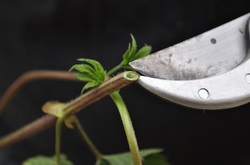 © Dutch Touch Growers, Inc. © Dutch Touch Growers, Inc. The first largest bines to emerge on 2nd year or older hop crowns are not necessarily the best to train. These "bull" shoots have a large hollow core, like a straw; and easily kink or are damaged by late spring storms. Most crowns put out two to three of these, at the most; and crews can be trained to identify them and prune them out as they twirl climbing bines. "Bull" shoots are often a light olive green color with stretched internodes - some field practice clipping a few will reveal which have the hollow stems. 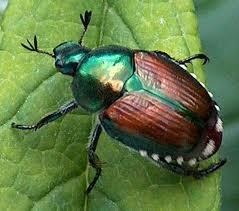 Experienced hop growers will be the first to tell you that a regular weekly schedule of checking your hopyard for problems can save big headaches, time, and cold hard cash. Being a good grower isn't about who has the biggest pesticide budget! Catching problems like pest and fungal outbreaks early is critical to controlling them successfully; with minimal treatments - before the damage is done. Proper scouting includes a close examination of the entire hopyard's environment (including the surrounding fenceline perimeter's). (This pest is capable of defoliating entire plants in less than a week) For quick knockdown of a Japanese beetle /Potato leafhopper outbreak for growers with RUP certification - check out Brigade 2ec or Leverage 360/2.7. Both are labelled for hops. TO DO LIST
If this sounds like too much work; please do consider hiring a professional crop scout. They know what to look for and when to look for it. Their services are relatively inexpensive and their advice - priceless. Properly done scouting and recording what you see in detail lets you identify patterns and conditions that affect the hop's growth and what conditions trigger disease and pest outbreaks. I recommend making a check-off form you use weekly during the growing season that covers all the above items so you don't miss anything. This will not only make you a better grower- it will make you a PROACTIVE grower. (I like to call them Jedi-growers because they always seem to know what is going to happen before it does.) Proactive growers can make minimal, targeted sprays; anticipating disease and pest cycles. They consistantly adjust - fertilizer, irrigation schedules, cultivation; like a steady clock. They also always seem relatively cheerful and un-stressed. (nice side-effect that both wives and partners seem to appreciate!) Scouting is something I do habitually 24/7 - I'm looking when I'm watering - I'm looking when I'm weeding- Heck, I'm looking when I walk the dog! 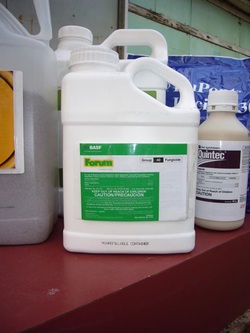 Forum is a systemic protectant fungicide made by BASF that has some curative properties for the control of Downy mildew in hopyards. Like most fungicides, it works best if it is applied before the conditions for disease to develop occur. It carries a caution label rating and can be applied up to 7 days before harvest, 3 times per season total. Compatible with most other fungicides and insecticides in a tank mix. Forum is one of the only systemic fungicides with antisporulant activity that fights sporangia before the fungalspores have a chance to form and produce destructive zoospores that infect tubers and leaves.The spore-stopping effect of Forum can control the further spread of downy mildew in already infected fields. Forum's active ingredient is dimethomorph. This class of fungicides is very susceptible to build up of resistant downy mildew. It should only be applied in rotation with other mode of action (MOA) fungicides and never twice in a row without another fungicide. It cannot be applied to hops aerially or through drip irrigation. Through spray coverage is essential, so proper nozzle selection (like hollow cone) and addition of a surfactant/ spreader/sticker is recommended for best control results. Grower notes: Forum is a "big gun" - very effective at close range! Where does it fit into an IPM program? Probably fits best in three places (remember, you can only spray this one 3X total per year). First, as an early spring spray on emerging hop shoots in a hopyard that is known to be infected with downy mildew. The idea is to spray the infected emerging shoots BEFORE they sporulate. Second, as a spray during a period when conditions for downy mildew to develop exist (again, only in fields with identified downy mildew present). Third, as a preventative spray after harvest on remaining folige and bines when late late mildew conditions exist. This late spray stops formation of the motile zoospores which infect the crowns and over-winter there till next Spring. Don't just spray this one for the heck of it - save the "big gun" for when you need it!
High soil temps above 95 degrees can seriously damage the fine shallow root feeder system of hops. Damage from excessive heat usually shows up a few days after it actually occurred - the plants stall and even wilt; even though the soil moisture is there. This problem is especially prevalent in newly established hopyards with wide row spacing Where the plant canopy doesn't provide soil shading.. Growers often compound their problem of high temperature damage by turning on the drip irrigation at mid-day. The temperature of the water in a black emitter tube line laid on soil in direct sunlight can reach scalding temperatures. With the low flow rates of most emitter systems a grower can easily apply a gallon of 120 degree (or more!) water to each plant in the yard. This effectively sautees the fine shallow feeder roots - disaster! Watch out for this pattern - the hops bines get progressively shorter and yellower away from the main feed. Solution: Watch the temperature forecast. FINISH all irrigation cycles by mid-morning. RESIST the temptation to turn on the irrigation at mid-afternoon! (In an emergency, open the end caps on the dripper lines and flush them until you feel the water temperature drop).
Consider adding some aerial sprinklers - which is the proper way to cool an overheated hopyard. Run them in short cycles before mid-day as cold water applied to hot leaves causes damage. Setting up your hopyard for an expected scorcher of a day is easy to do - just do it early! Mis-use of your watering system causes further plant damage, stalling of growth, and kills your yield potentials. |
Details
Blog AuthorLynn, the head hop grower at Great Lakes Hops has over 30 years of experience in the horticultural field. Browse the blog articles here to find useful growing information for humulus lupulus, based on personal experience and observations at Great Lakes Hops. Archives
January 2020
Categories
All
|
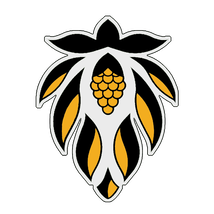
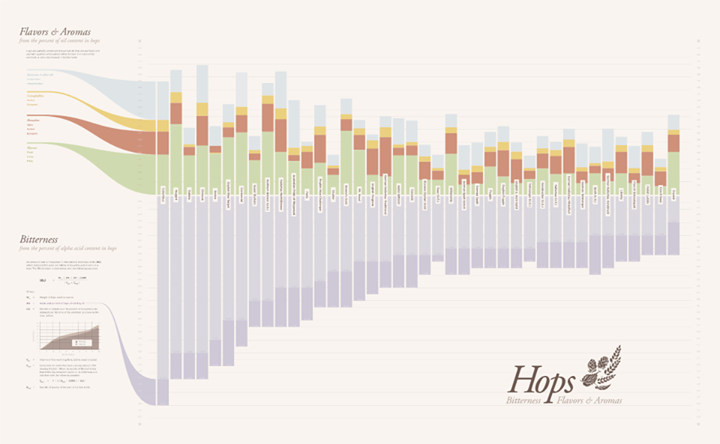
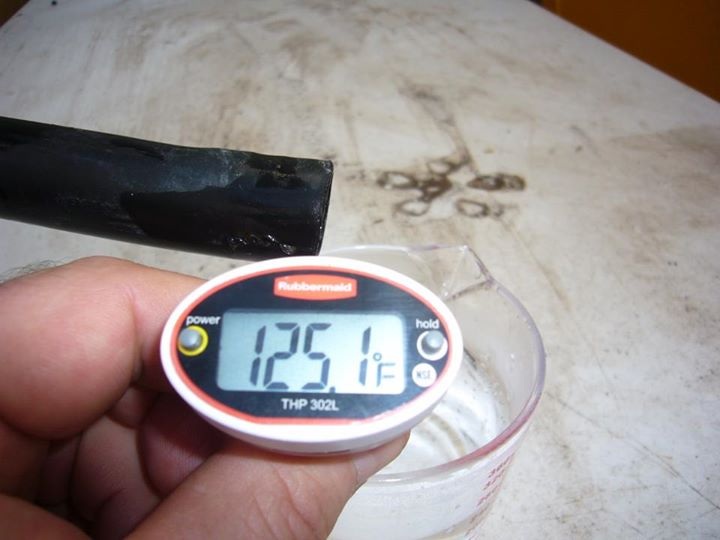

 RSS Feed
RSS Feed